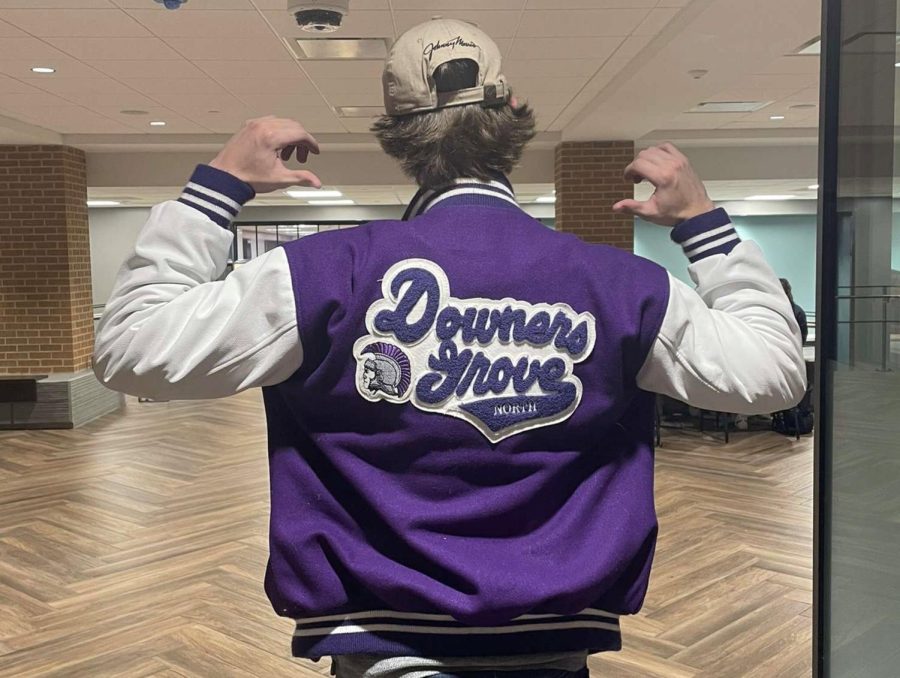Revive varsity letterman jackets
SHOWING OFF: Boys’ varsity gymnast Frank Miceli (12) models his varsity letterman jacket.
May 10, 2022
The popularity of the letterman jacket is almost a myth to students these days. It’s more typically viewed as an outdated accessory worn by the actors in “The Breakfast Club” than what it truly is: a timeless accessory. Beginning in the 1950s letterman jackets were a staple to high school athletes across the country, but the iconic jacket has unfortunately fallen off the backs of the North student body.
With the return of mom jeans, flare pants and platform shoes, the letterman jacket should be included as well, not only because it’s a statement of school spirit, but also of personal accomplishment.
The style first became popular on the Harvard baseball team in 1865 when pullovers were given out to only the most distinguished athletes. It wasn’t until the 1930s that the modern-day wool jacket with leather sleeves started trending. But, in the 1950s it was more than just a sign of athletic accomplishment; when worn by a female, it was a sign of a boyfriend’s commitment.
We receive pins and letters every year for academic and athletic accomplishments, but they serve no purpose without the classy leather jacket to accompany it. When our parents were in school, they were all the rage, and even now, my parents still love to take them out of the archives and flaunt them in my face.
Granted, the jackets nowadays hover around $300, a price that deters many especially since they are ‘out of style.’ Maybe it’s my uber school spirit, but it’s worth it— I just wished I would’ve realized it before my senior year.
For reasons unknown, the jacket doesn’t seem to be as disregarded at other schools as it is here. Is it lack of school pride? Expense? Or fear of starting a new trend?
Regardless, bringing back a varsity jacket starts with the athletic department and coaches valuing the letter and giving them to student athletes on time instead of as an afterthought. They’re a timeless article of clothing that demonstrates one’s accomplishments and expresses that we represent something bigger than ourselves: our community.


























